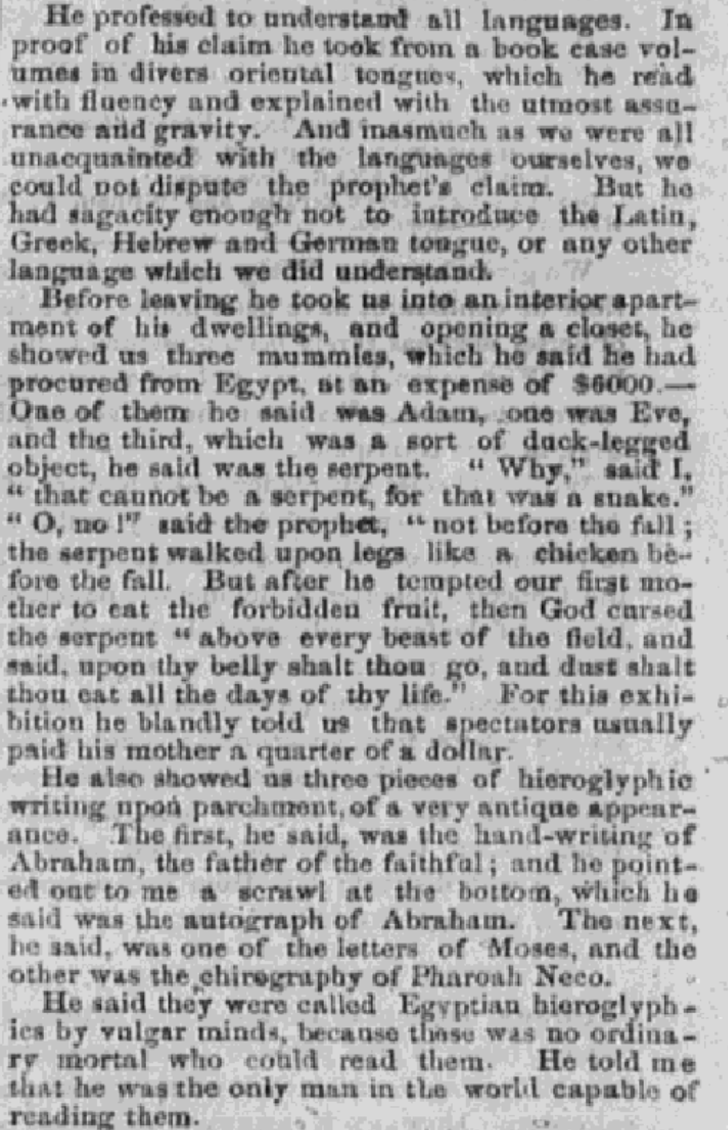Josiah Quincy recounts visit to Nauvoo in 1844, visiting Joseph, seeing mummies and papyri, says Joseph identified handwriting of Abraham and Moses on the papyri.
- Type
- Periodical
- Source
- Josiah Quincy Non-LDS
- Hearsay
- Direct
- Reference
Josiah Quincy, "The Mormons—a Sketch of Their History," Portsmouth Journal of Literature and Politics 65, no. 4 (January 28, 1854): [1]
- Scribe/Publisher
- Portsmouth Journal of Literature and Politics
- Audience
- Reading Public
- Transcription
He professed to understand all languages. In proof of his claim he took from a book case volumes in diverse oriental tongues, which he read with fluency and explained with utmost assurance and gravity. And inasmuch as we were all unacquainted with the languages ourselves, we could not dispute the prophet's claims. But he had sagacity enough not to introduce the Latin, Greek, Hebrew and German tongues, or any other language which we did understand.
Before leaving he took us into an interior apartment of his dwellings, and opening a closet, he showed us three mummies, which he said he had procured from Egypt, at an expense of $6000.—One of them he said was Adam, one was Eve, and the third, which was a sort of duck-legged object, he said was the serpent. "Why," said I, "that cannot be a serpent, for that was a snake." "O, no!" said the prophet, "not before the fall; the serpent walked upon legs like a chicken before the fall. But after he tempted our first mother to eat the forbidden fruit, then God cursed the serpent "above every beast of the field, and said, upon thy belly shalt thou go, and dust shalt thou eat all the days of thy life." For this exhibition be blandly told us that spectators usually paid his mother a quarter of a dollar.
He also showed us three pieces of hieroglpyhic writing upon parchment of a very antique appearance. The first, he said, was the hand-writing of Abraham, the father of the faithful; and he pointed out to me a scrawl at the bottom, which he said was the autograph of Abraham. The next, he said, was one of the letters of Moses, and the other was the chirography of Pharaoh Neco.
He said they were called Egyptian hieroglyphics by vulgar minds, because there was no ordinary mortal who could read them. He told me that he was the only man in the world capable of reading them.
- Citations in Mormonr Qnas
The B. H. Roberts Foundation is not owned by, operated by, or affiliated with the Church of Jesus Christ of Latter-day Saints.

